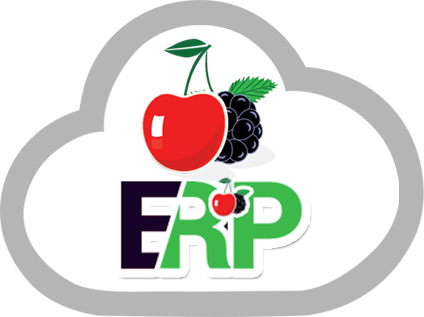
ERP Implementation: Role of Entities In SEO
Exploring SEO Strategies in ERP Implementation
As it is obvious that the future of search is going to be dominated by AI tools, there’s an important and overlooked aspect that is “entities in SEO” and it holds significant sway. They also have the same impact as the AI. Over the past many years, Google has been changing its perception towards an entity-centric approach and gradually decreasing its dependence on the exact matching of phrases. While the keywords remain relevant.
But the point is, how this works in practical terms. What does entity mean? And how do these changes affect your SEO Strategy?
In this blog, you will come to know the concept of entities in SEO, their mechanics, the ERP implementation, and the ways to optimize your website accordingly.
Unveil Entity In SEO in ERP Implementation
According to Google’s 2016 patent, an entity is anything that is singular, well-defined, unique, and distinguishable. It consists of both abstract concepts and palpable objects. But palpable is not what matters to entities but their distinctiveness from other elements.
Examples include
People
Ideas
Places
Objects
Books
Events
Colors
Companies
Dates
Currencies
Brands
If we look at “John Lewis”, we would definitely be confused about its specifications that either it is an entity or a keyword. So, let’s know the difference.
Entities vs Keywords
The keyword is a specific query that the user enters into a search engine while the entity is that concept or object to which the keyword is referring.
Take the keyword “queen” as an example. The single word queen is not referring to any context so it’s not an entity, it’s a keyword. But if the user refers to the queen of England or any monarch, it becomes an entity.
So, the queen is a keyword and the queen of England is an entity. This shows that the entity is a well-defined and unique context.
How do Entities work in Google Search?
Based on Google’s 2017 patent, the user enters a query and Google’s algorithm assesses whether the query has specific entities by matching it with other interconnected entities. After that, it delivers user-centric information according to the interconnected entities.
Let’s break this process into simple steps:
- The user submits a query
- Google’s index database gives the search results of the query
- Google finds out the entities linked with the query
- Google discovers other query-related entities to enhance the search query
- Google sends responses to the user based on its index, primary entity, and other interconnected entities.
Let’s learn it through an example. If the user enters, who is the lead singer of Queen? Google will look out for the top 10 names from its search index and give the most commonly occurring name as the answer. Google will find out if the user wants to know the singer who is associated with a band called Queen. So, Google will answer with the entity “ Freddie Mercury”.
Evolution of the idea of “Entities In SEO” in the last 10 years
The evolution of the idea of “entities in SEO” over the past decade shows that Google has changed its algorithms. The updates show that Google now puts more emphasis on semantics, user intent, and entities for ranking rather than relying on keyword matching for content ranking.
Knowledge Graph 2012
This graph was introduced in 2012 that shows the database of entities and the relations between the entities. These relationships between the entities are shown visually in the search result through the Knowledge Panel. For instance, if you search for a movie, the search engine will show you the movie actors, directors, and other related movies. This shows the relationship between the entities.
Hummingbird 2013
In 2013, Google changed its focus from keyword matching and shifted it to a deeper grasp of language semantics. This Hummingbird update in 2013 introduced NLP- Natural Language Processing. According to it, the results are based on word meanings. As a consequence, the pages attached with search gained more rankings as compared to those pages which were only optimized with keywords.
RankBrain 2015
RankBrain was the refinement of Hummingbird which uses AI to refine Google’s algorithm. It basically identifies the similarities between the pages to choose the one that is to rank higher.
BERT 2019
It places greater emphasis on the user’s internet. So the algorithm can handle more complex and conversational queries than before.
MUM 2022
This update has further enhanced Google’s capabilities. The goals of this update include helping the user find answers swiftly and providing subtopics to help the users explore deeply.
These updates show how remarkably Google has evolved and put more emphasis on context, entities, and meaning.
Practical ways to optimize for entities in SEO
This article has cleared up all the confusion regarding entities and algorithms. Now, let’s learn some ways to incorporate entities into SEO.
Topical clusters
When you are creating content for your website, try to think beyond the limits and beyond that keyword. Try to establish expertise in that subject and then search for it. A topical cluster is basically a group of pages, individuals, and blog posts that are linked together but are associated with the same topic. For instance, you can publish a blog named “ The Ultimate Guide to Student Accommodation in Liverpool”. This topic is basically the pillar page and you can write briefly about all of its aspects. Subsequently, you can add links to other blogs that delve deeper into the topic and the subtopics. These clusters link back to the main pillar page.
Keyword research vs entity research
Keyword research is a critical part of any SEO project. It enables you to know what your customer wants, what he searches for, and how often he searches for that particular keyword. In addition to it, it is also important to consider the entities that are connected to your website. In this way, you can keep an eye on the entities which your competitors are covering too.
Backlinks
The process of entity optimization involves more than on-page elements. So consider how you are linked to the website. While you are perusing backlinks, assess the websites carefully where your links appear. Also, check whether these sites are linked to your entities or not.
Establish your brand as an entity
With the passage of time, your brand can evolve naturally into an entity. It is better to establish a clear distinction between your brand to avoid resemblance to any other company in the market. To avoid this confusion, you should have an “About Us” page on your website. This section should consist of your identity, team members, activities, and location.
Final thoughts
The notion of entities in SEO looks like a theoretical one that lacks practical relevance. But Google is putting much emphasis on entities through its algorithms updates. This ERP implementation is increasing day by day. There are a number of methods available on the websites to enhance entity optimization. You can enhance the visibility of the entities by employing on and off-page strategies. thus, through ERP implementation, you can enhance the role of entities in SEO.
